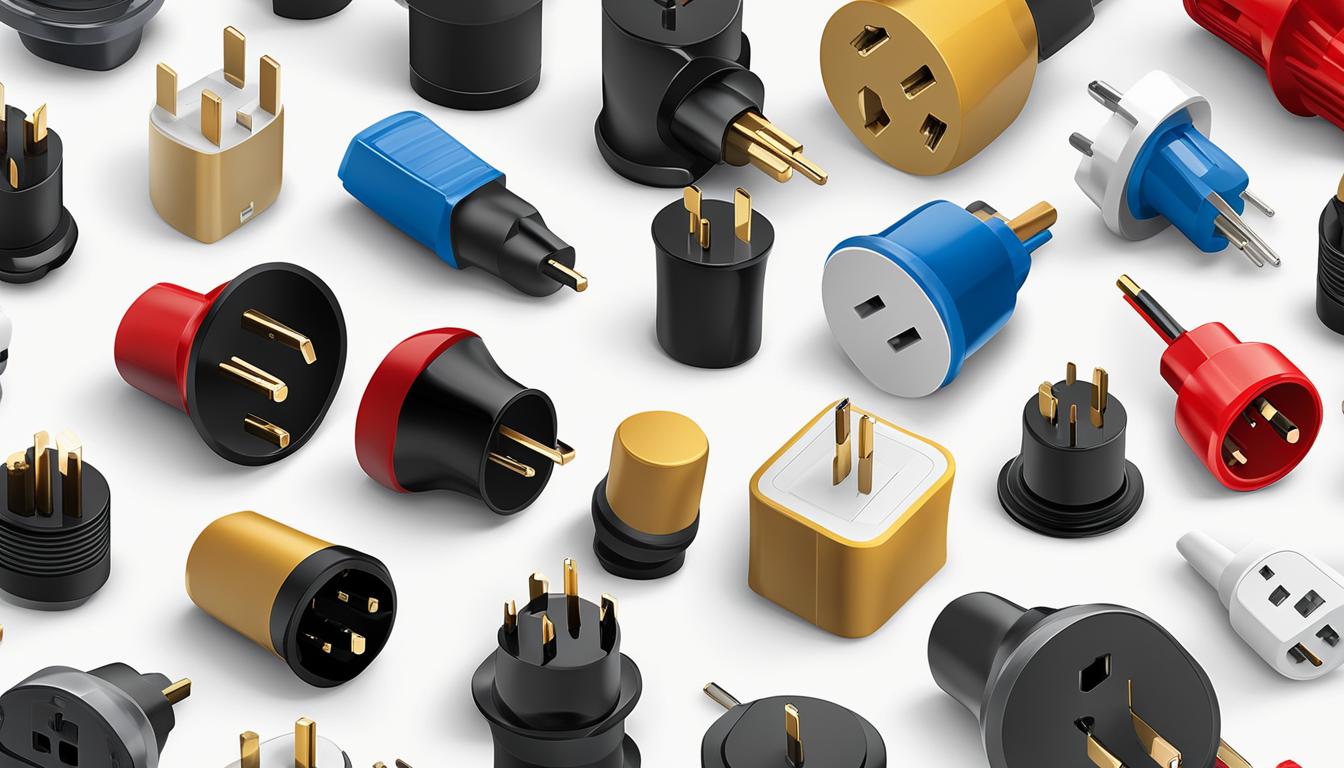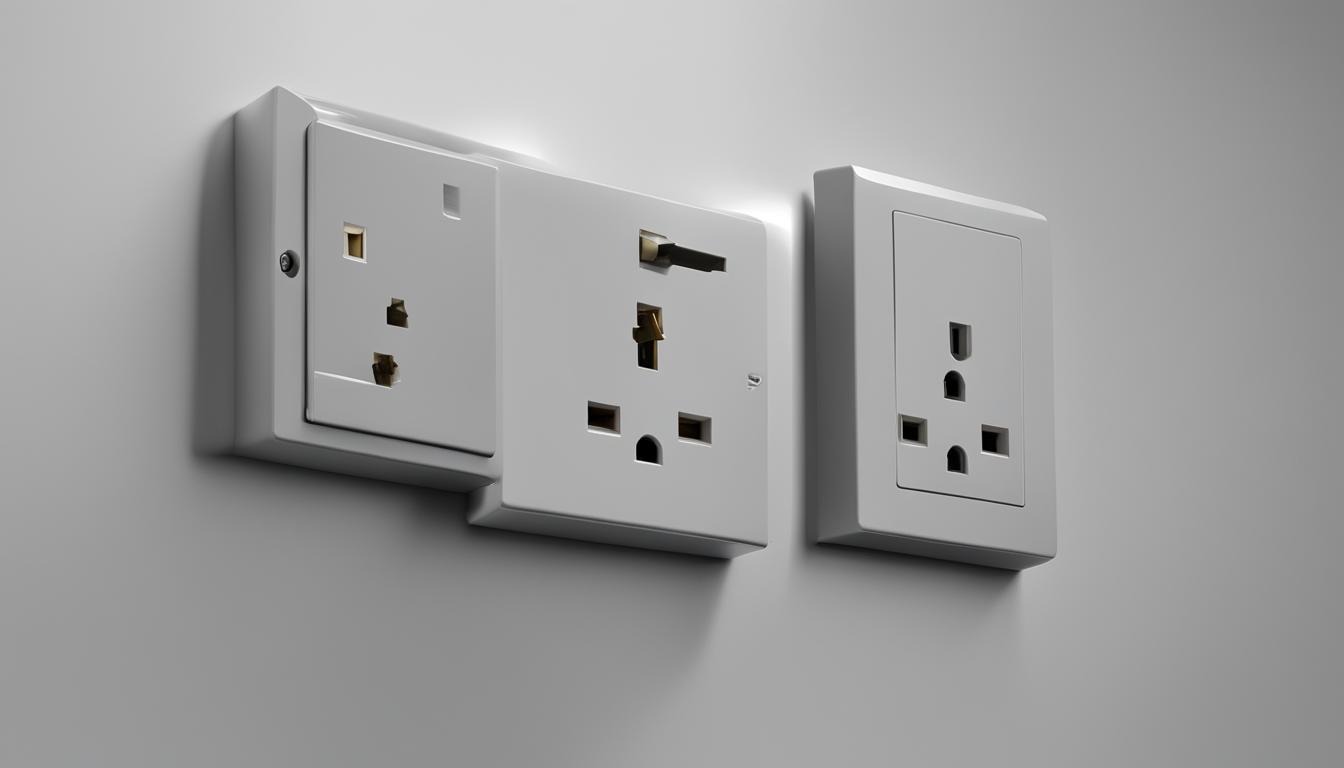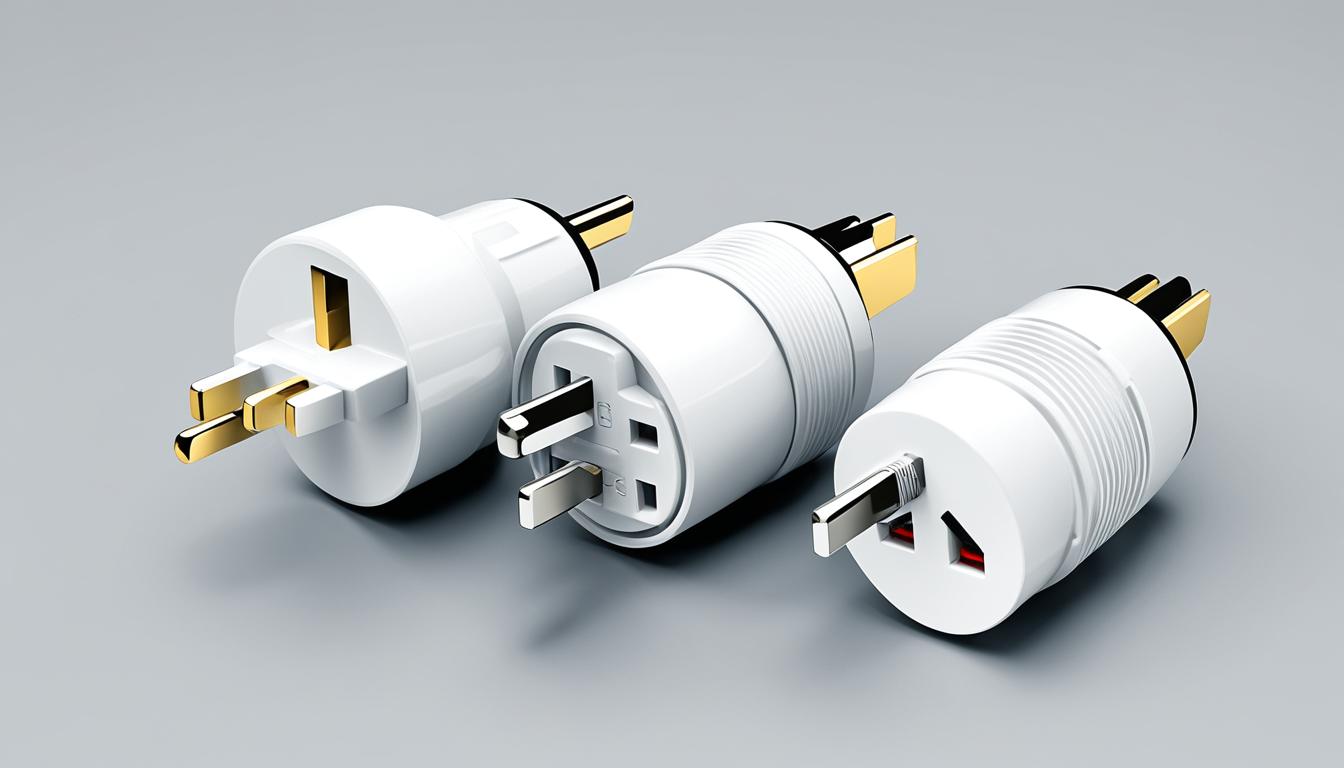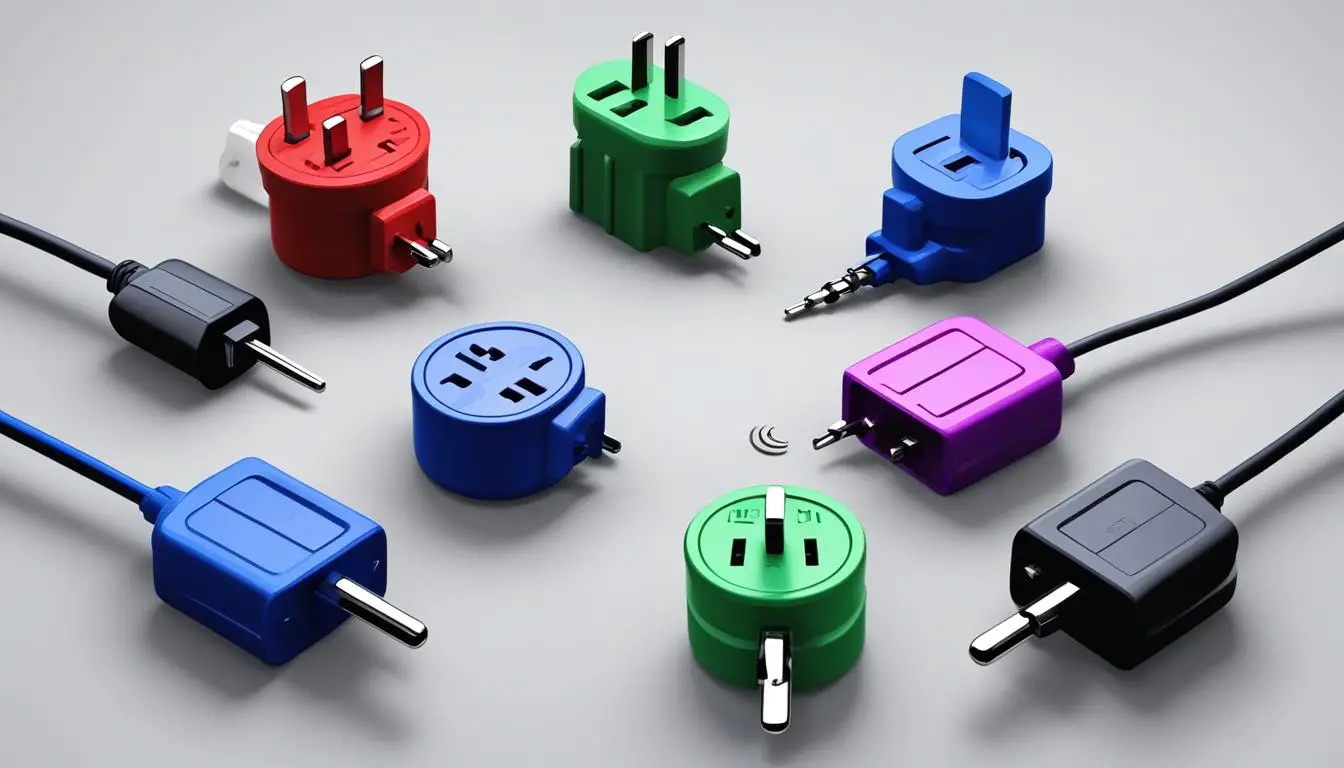Explore the different types of electrical plugs, from Type A to Type N, including their uses, benefits, and variations. Ensure global compatibility with our in-depth guide on plug types and sockets.
Introduction to Electrical Plugs- Types and Global Compatibility
Define electrical plugs and discuss their purpose and importance
Electrical plugs are gadgets that connect appliances to a power source. They make sure devices get the right voltage and current to work safely. Electrical plugs fit into sockets, creating a link that lets power flow from the outlet to the device. This is super important because bad connections can cause short circuits, fires, or damage to equipment.
Explain the need for different plug types worldwide and the challenges of incompatibility
Different parts of the world use various types of electrical plugs due to history, safety rules, and local preferences. This can be tricky when traveling or moving gadgets between countries. For example, a device with a Type A plug (used in North America) won’t fit into a Type G socket (used in the UK) without an adapter. These incompatibility issues can be annoying and even dangerous if not handled properly.
Introduce the various classifications and types of electrical plugs, setting the stage for further exploration
Electrical plugs come in many designs based on their shape, configuration, and use. Here are some common types:
- NEMA Plugs: Mostly used in North America; includes types like NEMA 1-15 (two-pronged) and NEMA 5-15 (three-pronged).
- CEE 7 Standard AC Plugs: Found across Europe; includes variations like CEE 7/4 (Schuko plug) and CEE 7/16 (Europlug).
- British Standard Plugs: Known as Type G; has three rectangular prongs.
- Plug Adapters: Devices that let one type of plug fit into another type of socket.
Knowing these classifications helps you pick suitable adapters or replacement plugs when dealing with international travel or using foreign equipment.
By covering these basics, we set up a good foundation for diving deeper into each type’s details, uses, and compatibility issues in later sections.
Type A, B, and C Plugs
Type A (NEMA 1-15)
Type A plugs , also known as NEMA 1-15 plugs, have two flat parallel prongs. These two-pronged plugs are ungrounded and typically handle up to 125 volts AC and 15 amps. They are simple in design, making them ideal for low-power devices like lamps, radios, and chargers.
You’ll find Type A plugs mainly in North America , including the United States and Canada. They’re also used in parts of Central America and Japan. Because they are so common in these areas, many household and office gadgets come with these plugs.
Even though Type A plugs lack a grounding pin, they follow strict safety regulations to protect users. For example, they must meet standards set by groups like Underwriters Laboratories (UL) in the U.S. Some versions have polarized prongs to make sure the plug fits correctly into the socket, reducing the risk of electric shock.
Type B (NEMA 5-15)
The Type B plug , or NEMA 5-15 plug , has three prongs: two flat blades and one round grounding pin. This design adds safety by grounding the electrical connection. These three-pronged plugs can handle up to 125 volts AC at 15 amps, making them suitable for higher-power appliances like computers, kitchen gadgets, and power tools.
Type B plugs are widely used across North America , including the United States, Canada, and Mexico. Their grounded design makes them a preferred choice for many homes and businesses where safety is crucial.
One big advantage of using Type B plugs is their grounding feature which helps prevent electrical shocks. However, they can be bulkier than ungrounded types like Type A. Plus, older outlets might not support the three-prong setup without an adapter or rewiring.
Type C (CEE 7/16 and CEE 7/17)
The Type C plug , which includes both CEE 7/16 (Europlug) and CEE 7/17 (Contour Plug) variants, features two round pins spaced about 19 mm apart. The Europlug is generally used for devices needing up to 2.5 amps while the Contour Plug can handle currents up to 16 amps.
These Type C plugs are very common throughout Europe but are also found in parts of Asia, Africa, and South America due to their versatile design that fits multiple socket types within these regions.
Safety standards for Type C plugs require compliance with international rules from groups like the International Electrotechnical Commission (IEC). These standards ensure that materials are fire-resistant and designs prevent accidental contact with live parts when plugging or unplugging devices.

Type D, E, and F Plugs
Type D (BS 546)
Type D BS 546 plugs are known for their distinct design. They have three large round pins arranged in a triangular shape. These plugs are typically rated for voltages between 220-240V and can handle currents up to either 5A or 15A, depending on the model.
These plugs are commonly used in countries like India, Sri Lanka, Nepal, and Namibia. This is largely due to historical ties with British electrical standards.
Safety is a key consideration with Type D plugs. They come in both grounded and ungrounded versions. Grounded plugs offer better safety by providing an extra path for electrical currents if there’s a fault. Regulations often mandate the use of grounded plugs to prevent electric shock and ensure user safety.
Type E (CEE 7/5)
Type E CEE 7/5 electrical plugs are widely used across Europe, especially in France and Belgium. These plugs feature two round pins along with a hole for the earth pin located on the socket side. The voltage rating for these plugs is generally 220-240V with a current rating of up to 16A.
One major advantage of Type E plugs is their compatibility within many European countries, making them convenient for travelers within this region. However, they do have limitations such as incompatibility with other plug types without adapters or converters.
The design of Type E plugs ensures a secure connection with sockets, which reduces the risk of accidental disconnection or exposure to live parts. This contributes significantly to electrical safety standards in regions where these plugs are used.
Type F (CEE 7/4)
Type F CEE 7/4 plugs, also known as Schuko plugs, are prevalent throughout Europe including Germany and Austria. These plugs feature two round pins along with grounding clips on both sides for enhanced safety. The standard voltage rating is between 220-240V with a current capacity of up to 16A.
The structure of Schuko-type F plugs includes robust grounding mechanisms that ensure safe operation by preventing electric shocks through effective earthing. This makes them one of the safest plug types available globally.
However, compatibility issues can arise when using Schuko-type F plugs outside regions where they are standard without proper adapters or converters. Travelers need to be cautious about these compatibility challenges to avoid potential hazards or inconvenience during international travel.
Type G, H, and I Plugs
Type G (BS 1363)
Type G plugs, known as BS 1363 plugs, are widely used in the United Kingdom and other countries like India. These plugs are designed for high voltage power supplies and have robust safety features.
Design and Voltage Capabilities
Type G plugs have three rectangular prongs arranged in a triangular pattern. One of these prongs is a grounding pin that helps prevent electric shocks. They operate at 220-240V and can handle currents up to 13A.
Countries Using Type G Plugs
Type G plugs are primarily used in:
- United Kingdom
- Ireland
- Malta
- Malaysia
- Singapore
- India
Safety Features and Regulations
Type G plugs come with several safety mechanisms:
- Fused Design: Each plug has a fuse to protect against overloading.
- Insulated Prongs: The tips of the prongs are insulated to avoid accidental contact with live parts.
- Shuttered Sockets: Electrical sockets have shutters that open only when all three prongs are inserted correctly.
These features comply with strict British standards for electrical safety.
Type H (SI-32)
Type H plugs, identified by the SI-32 standard, are mainly used in Israel. These unique plugs meet specific regional needs.
Characteristics and Applications
Type H plugs have three flat pins arranged in a Y-shape configuration. They work at 230V and can handle currents up to 16A.
Countries Using Type H Plugs
The use of Type H plugs is mostly confined to Israel due to their unique design specifications.
Advantages and Disadvantages
Advantages:
- Compatibility: Designed specifically for Israeli power grids.
- Safety: Grounding mechanisms enhance electrical safety.
Disadvantages:
- Limited Use: Mainly restricted to Israel.
- Non-universal Design: Not compatible with other international plug types without adapters.

Type I (AS 3112)
Type I plugs conforming to the AS 3112 standard are common in Australia, New Zealand, and several Pacific Island nations.
Design and Specifications
Type I plugs feature two flat pins forming an inverted V-shape along with an additional grounding pin below them. They operate within a voltage range of 220-240V and support currents up to 10A or higher depending on the specific application.
Countries Using Type I Plugs
Countries using Type I plugs include:
- Australia
- New Zealand
- Papua New Guinea
- Fiji
Safety Standards and Regulations
Type I plug designs adhere strictly to Australian standards (AS/NZS 3112), which mandate:
- Insulated Pins: To prevent accidental contact with live parts.
- Grounding Mechanisms: Ensuring user protection from electric shocks.
- High Durability: Designed for longevity under various environmental conditions.
Understanding different types of electrical plugs like Type G (BS 1363), Type H (SI-32), and Type I (AS 3112) is crucial for ensuring compatibility and safety across different regions worldwide. Each type has unique features tailored to meet specific regional requirements while adhering to stringent safety standards.
Type J (SN 441011)
Structure and Voltage Requirements
Type J plugs, also known as SN 441011 electrical plugs, are mainly used in Switzerland and Liechtenstein. These plugs have three round pins arranged in a triangular shape. They usually handle voltage ratings from 220 to 240 volts with a frequency of 50 Hz.
Countries Using Type J Plugs
Type J plugs are standard in:
- Switzerland
- Liechtenstein
Safety Features and Regulations
Type J plugs come with several safety features to ensure safe connections. They often have insulating sleeves on the pins to prevent accidental contact with live parts. The design follows strict Swiss regulations to enhance user safety.
Type K (DS 60884-2-D1)
Design and Specifications
Type K plugs, identified by the DS 60884-2-D1 standard, are common in Denmark and Greenland. These plugs feature two round pins and a grounding pin at the bottom. They typically support voltage ratings between 220 to 240 volts with a frequency of 50 Hz.
Countries Using Type K Plugs
Type K plugs are commonly used in:
- Denmark
- Greenland
Safety Precautions and Regulations
Safety is key for Type K plugs. They have grounding mechanisms that lower the risk of electric shock. Danish regulations require these plugs to meet specific standards for insulation and durability, ensuring reliable performance over time.
Type L (CEI 23-16-VII)
Characteristics and Voltage Ratings
Type L plugs follow the CEI 23-16-VII standard and are widely used in Italy. These plugs come in two versions: one with smaller pins for lower currents (10 A) and another with larger pins for higher currents (16 A). The voltage rating generally ranges from 220 to 240 volts, operating at a frequency of 50 Hz.
Countries Using Type L Plugs
Countries using Type L plugs include:
- Italy
Safety Standards and Regulations
The design of Type L plugs includes features like insulated pins to avoid accidental contact with electrical currents. Italian regulations mandate rigorous testing for these plugs to ensure they meet high safety standards, offering reliable protection against electrical hazards.
Type N (IEC 60906-1)
Design and Applications
Type N plugs adhere to the IEC 60906-1 standard and are primarily found in South Africa and Brazil. These plugs have three round pins arranged in a triangular formation. The voltage rating ranges from 220 to 240 volts, with a frequency of either 50 or 60 Hz depending on the country.
Countries Using Type N Plugs
Type N plug usage is prevalent in:
- South Africa
- Brazil
Advantages:
- Compatibility: Designed for universal use within countries following this standard.
- Safety: Recessed sockets reduce the risk of accidental shock.
- Durability: Built to last through frequent use without degrading.
Disadvantages:
- Limited Adoption: Not widely used outside South Africa and Brazil.
- Availability: Replacement parts may be harder to find internationally.
By sticking strictly to industry standards, these plug types ensure safe electrical connections across various regions while maintaining compliance with local regulations.

Future Trends and Innovations in Electrical Plugs
Discuss the latest advancements and innovations in plug design, technology, and compatibility
In recent years, there have been significant advancements in plug design. One notable improvement is the integration of enhanced safety features like embedded fuses. These fuses help prevent electrical fires by cutting off power if a fault is detected. Additionally, many new plugs are made from eco-friendly materials, such as halogen-free plastics, which reduce environmental impact.
Another area of innovation is improved compatibility with various international standards. For instance, plugs designed to meet IEC 60083 standards can be used in multiple countries without the need for adapters. This makes them highly convenient for travelers and businesses operating globally.
User-centric designs have also seen considerable progress. Modern plugs often feature ergonomic grips that make them easier to insert and remove. This user-friendly approach not only enhances convenience but also reduces wear and tear on both the plug and the socket.
Explore the role of smart plugs and IoT devices in the evolution of electrical plugs
Smart plugs are revolutionizing how we interact with electronic devices. These innovative gadgets allow users to control their appliances remotely via smartphones or voice assistants like Amazon Alexa. This remote control capability adds a layer of convenience that traditional plugs simply can’t offer.
Energy monitoring is another key benefit of smart plugs. By providing real-time data on energy consumption, these devices help users identify which appliances are using the most power. This information can be invaluable for reducing energy wastage and lowering electricity bills.
Moreover, smart plugs often come with automation features that enhance convenience further. For example, you can program your coffee maker to start brewing at a specific time each morning or set your lights to turn off automatically when you leave the house.
Predict future trends and developments in the landscape of electrical plugs and power distribution
Looking ahead, several trends are poised to shape the future of electrical plugs and power distribution systems. One significant trend is the increased adoption of renewable energy sources like solar panels and electric vehicles (EVs). As these technologies become more widespread, there will be a growing need for specialized connectors and adapters that facilitate their integration into existing power grids.
Global electricity standards are also likely to evolve, promoting greater uniformity across different regions. This shift could simplify international travel and business operations by reducing the number of adapters needed for various plug types.
Energy conservation will continue to be a major focus as well. Advances in electrical infrastructure will likely include smarter grid systems capable of optimizing energy distribution based on real-time demand data. These systems could work hand-in-hand with high-performance plugs designed to minimize energy loss during transmission.
In summary, ongoing innovations in plug design, coupled with emerging trends in renewable energy and global standardization, promise an exciting future for electrical connectivity.

